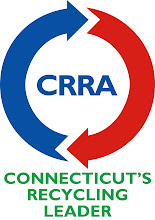In 2009 Connecticut expanded its bottle bill to put five-cent deposits on plastic water bottles, the same deposit Connecticut consumers pay on beer and soda bottles and cans. But where the bottlers and distributors keep the nickels from unredeemed beer and soda containers, the state would keep the unclaimed water deposits.
When the legislation was passed in 2009, state officials said they expected to take in $17 million a year in unclaimed water bottle deposits. At 20 bottles per dollar, that would have required 340 million bottles going unredeemed every year, out of estimated annual sales of more than 500 million bottles, a number used by both the state and the Container Recycling Institute, a bottle-bill proponent.
The expansion took effect on Oct. 1, 2009. While numbers for the full fiscal year (which ended June 30) are not yet available, in April it was reported that the state only collected $680,000 from January through March of 2010. That’s 13.6 million unredeemed bottles for those of you without a calculator handy.
As far back as 2007, CRRA had been warning of the unintended consequences of putting a deposit on water bottles – namely, the adverse impact it would have on curbside recycling. CRRA processes the recyclables collected from residents of 76 cities and towns at no cost to those towns. (Those same towns pay as much as $69 per ton to bring us their garbage, underscoring the fiscal benefits of recycling.)
The larger of our two recycling systems, the Mid-Connecticut Project, has an annual budget of about $1.4 million, all paid for by proceeds from the sale of paper, cardboard, aluminum, steel, glass and plastic we sort and bale at our recycling processing facility in Hartford. In fact, because the 64 Mid-Connecticut Project recycling towns continue to increase their recycling rate, they’ve generated enough revenue to allow us to pay them rebates in 2008 and 2009. (We don’t have final figures for this year yet.)
That’s all good news. But the situation could have been even better, because it appears people have dramatically reduced their purchases of bottled water. How do we know? If the state is collecting fewer unredeemed deposits than it anticipated, then if consumers are buying the same number of bottles, CRRA and other recyclers should be seeing more.
However, our Mid-Connecticut system saw a substantial dropoff in the amount of polyethelene (PET, or #1 plastic), the material of which water and soda bottles are made, starting last October. Consider: in the nine months before the expansion took effect, we processed and shipped about 223 tons per month of PET. In the first nine months after the expansion, we processed and shipped about 156 tons per month, a 30-percent drop.
This chart shows those month-by-month figures. The dropoff hit in October 2009, exactly when the expansion hit.

The 67 tons of plastic represents about 29 million fewer bottles purchased in Mid-Connecticut towns. Extrapolated over the population of the entire state, that’s about 90 million fewer water bottles in those nine months – far more than the difference between what the state anticipated and what actually happened.
More to the point, that loss of plastic hurts curbside recycling, which, as we said earlier, depends on revenues from sales of recycled materials. In June, a ton of #1 plastic fetched about $400 on the commodities market. Commodity prices fluctuate, but even at $300 per ton those 67 tons per month cost the Mid-Connecticut system just under $250,000, or almost one-fifth of the entire year’s budget.

No comments:
Post a Comment